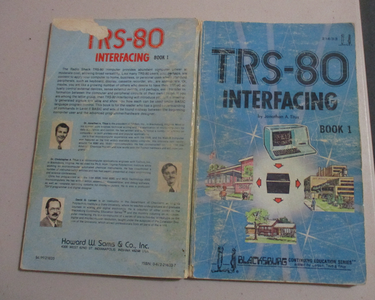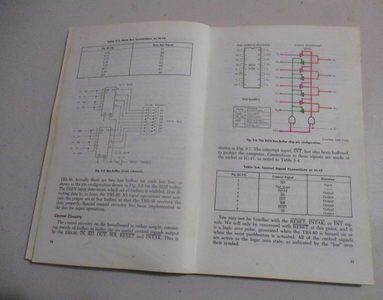@robotbuilder I did not know the TRS-80 had an interface. I had a friend who had one. The AppleII+ did have a joystick port. My dad and I looked into using some TTL logic, to possibly drive a relay(s). We also found an aftermarket card that fit in the Apple, to drive relays and such, but it was about $800 as I recall. In the end, we gave up on the idea of computer control.
I still have the book although a bit worse for wear. The color bit was me using color pens to try and understand tri state logic. I used to trace current paths with different colors to try and understand how a circuits worked. Back in those days I really loved electronics but for the last few decades my main hobby has been programming. The TRS80 was my main introduction to Assembler programming for which there was also a book! No internet sources 🙂
There was also a book for the c64 interfacing.
Wow, how very cool. Had I known the TRS-80 had such a means of interfacing, I would probably have been quite intrigued and tried to get my hands on one. My friend who had one, probably didn't even know it had that possibility. And like you mention, there was no Internet, to "Google" such things. You had to have the book, the magazine, or know someone who knew stuff. I was living in San Diego at the time, (~1983-1992) a fairly high-tech place, but us kids that were into robotics, electronics and computers, were few and far between. Racketball, Skateboards, Boogie Boards & Hobie Cats wore more of a thing which occupied my time starting about 1986. But before that, I received the Mouser and DigiKey catalogs, subscribed to the A+ magazine, and hashed out BASIC programs on the Apple.
Since we have a new thread, I will explain a bit more about my robot. It was actually an evolving project that started as an 8th (1984) Science Fair project, was back burnered, and re-emerged as my 11th grade (1987) Science Fair project. It was basically 3 simple axis driven by DC motors and controlled by DPDT switches + DC motor gripper made from a bicycle brake caliper. What made my project somewhat unique, is that the end effector grips had a sensor. I put two thin bits of sheet metal, with a layer of plastic in between. But when pressure was applied to the gripper (finger tips wrapped in racket grip tape), it would make contact like a switch and turn on a light bulb. With a lot of trial and error, I fine tuned the gripper, bulb indicator, so that I could pick up a hollowed out chicken egg shell with the robot arm, by know how much pressure was enough to grasp the egg, but not crush it. So the feedback loop was what made my robot arm different from others.
Long story short, that gripper feedback system, with only a bulb and no computers, was a key component in me winning a blue ribbon at the San Diego science fair, and moving on to the state level. (Which I didn't even get a placing at all.... ) One of the judges at the San Diego fair was Harold Cohen. He hired me as a highschool kid, and he taught me how to run a lathe and a milling machine, and machine robotic parts according to his designs. Harold was teaching a computer how to draw and paint like an artist. He wanted me to build a robotic arm, that could paint like a human, and not just draw, like a plotter. Cool stuff for the 80s....
But I fear the length of my post... I will see if I can find some pics of my old robot arm.
Imagine by thought, create, don't wait, Scott.


